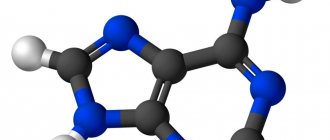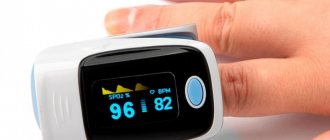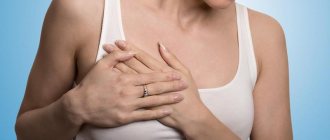Saturation (English saturation - “saturation”) is an indicator of the level of oxygen saturation in the blood. If it is at a low level, this indicates hypoxemia - a condition requiring emergency medical attention.
It is necessary to normalize the level of oxygen in the lungs and blood, otherwise complications, including death, are possible.
Doctors use a special medical device to measure oxygen saturation - a pulse oximeter. Using this device, an analysis is made that gives an idea of the current state of the patient’s lungs and circulatory system. Thanks to the quick results, doctors decide on the need for additional oxygen support. Since it is not possible to urgently organize a computed tomography (CT) scan in all cases, reduced saturation helps specialists determine the presence of a viral infection of the respiratory system - pneumonia.
Measuring oxygen in the lungs and in the circulatory system with a pulse oximeter makes it possible to assess the patient’s condition and hospitalize him. This is especially true when affected by COVID-19. If a person who suspects he has this disease has such a device, he can analyze the condition at home. However, it is worth knowing that measurement cannot be an alternative to other methods.
Both the patient and the staff of the medical institution should not draw conclusions based on saturation - oxygen levels in the blood can vary depending on various factors:
- device sensitivity;
- the color of the patient's skin;
- type of lighting.
If we consider saturation as the main diagnostic method, the risks of incorrectly assessing the patient’s condition are quite high.
Even with a severe form of coronavirus, oxygen may be at an acceptable level in the first days, and then drop sharply. The decrease occurs at night even in those who are completely healthy.
More about saturation
Saturation is a parameter showing the oxygen level as a percentage. It enters the bloodstream from the lungs and is transported to all systems of the body. If the indicator is lowered during coronavirus, this indicates a lack of oxygen - hypoxemia is highly likely provoked by a viral infection of the respiratory system. The assumption can be confirmed or refuted by conducting other studies, such as CT, where the doctor evaluates the visual condition of the organ.
determination of oxygen norm with a pulse oximeter
Determination of parameters and reasons for measuring saturation
Detection of oxygen levels requires the use of invasive and non-invasive techniques. In both options, the error is 1%, which is considered the most accurate results.
In the first case, the procedure involves taking arterial blood to identify:
- amount of hemoglobin;
- volume of oxygen gas;
- indicators as a percentage.
For every gram of hemoglobin there is 1.34 ml of oxygen. After the study, the doctor checks the data from a special table of saturation norms. It takes into account the differences for newborns, toddlers and pregnant women.
The saturation rate is a relative parameter, depending on environmental factors and the characteristics of the patient’s body. The need for measurement is associated with identifying or clarifying the presence of certain pathological processes:
- overweight;
- anemic conditions;
- high blood pressure;
- thyroid dysfunction;
- heart disease;
- disruption of the circulatory system;
- severe injuries;
- coronavirus infection.
Lack of oxygen is observed after certain surgical interventions and with constant smoking. Saturation helps to identify secretly developing Covid-19. When the pathogen enters the lung tissue, the alveoli involved in gas exchange are damaged. Inflammatory processes provoke swelling of the lungs and pneumonia.
Saturation of cells with O2 is important for the normal functioning of the body. If there is a shortage, performance and motor activity decrease, health deteriorates sharply, headaches and dizziness appear. At the first signs of hypoxia, the patient should go to the local clinic and undergo testing (invasive or non-invasive).
Why are measurements taken?
The oxygen level is measured to determine the state of health and promptly identify hypoxemia, which can cause death. Through this simple analysis, the degree of the disease is determined and measures are taken to stabilize the condition.
With the advent of COVID-19, the term Silent Hypoxemia has been used, which translates as “silent hypoxemia.” Its appearance is due to the fact that about 50% of patients admitted to hospital have a low level of saturation, while the symptoms indicate the opposite. Patients do not experience shortness of breath, they are not tormented by a cough, and their body temperature is at a normal level. However, a CT scan shows significant lung damage, so the patient is placed on oxygen support.
Details for instructions for use
Each pulse oximeter package contains the necessary documentation, including instructions for use. It is not difficult to understand, since the device is compact and simple. Most home pulse oximeters run on AA batteries or rechargeable batteries. To use the device, you must insert the batteries and wait a few minutes. Then you should pay attention to the device's charge level - if it is low, the readings may not be accurate enough. Next, you just need to follow a few simple steps yourself or with an assistant.
- The first step is to take a stationary position, sitting or lying down, with your arm supported. It is recommended to remain in this position for several minutes before measuring to obtain more accurate readings.
- The second step is to place your finger in the special hole of the pulse oximeter. It must be clean and free of nail polish and other coatings that could affect the measurement result. The sensor will operate for 20–30 seconds, depending on the model of the device, and during this time the finger must remain motionless.
- When the results are displayed on the monitor, the measurements are completed. It is recommended to record the data in order to keep a constant record of heart rate and saturation levels. After this, the pulse oximeter should be turned off and placed in a box to keep it away from sunlight and dust.
The device can be used independently or with an assistant. Even simple portable pulse oximeters can measure pulse and saturation in bedridden patients, as well as during sleep. For longer measurements, it is recommended to use instruments that continuously read data and display it on the screen. The monitor is attached to the wrist, and the data is accurate even if you do not hold your finger in a stationary position. These pulse oximeters are effective for diagnosing sleep apnea and for monitoring heart rate and saturation levels around the clock.
How to understand pulse oximeter readings
As a result of the measurement, all data is displayed on the monitor screen. The first indicator that a pulse oximeter reads is the pulse. It is displayed in the number of heartbeats per minute. In an adult, the normal pulse ranges from 60 to 90 beats per minute. It can increase after physical exertion, with chronic diseases of the heart and blood vessels, and also as a result of a sharp decrease in oxygen levels in the blood. The pulse is not a constant value and can change frequently, so to obtain more accurate data it is recommended to measure it several times at intervals of 3-4 minutes.
The second indicator for which portable pulse oximeters are used is saturation (SpO2). It is displayed as a percentage and indicates the level of oxygenated hemoglobin. In a healthy person at rest, it will correspond to 95% or more. However, if the monitor displays a result of 98–100%, it is worth repeating the procedure - the device may be faulty. The saturation level from 90 to 94% corresponds to 1 degree of hypoxia, from 75 to 89% - 2 degrees, from 60 to 75% - 3 degrees. When saturation decreases to 60%, hypoxic coma is observed, which poses a danger to the patient’s life. It is recommended to consult a doctor if the monitor displays a saturation level of 94% or lower - even minor oxygen deprivation can significantly affect the functioning of internal organs and tissues.
How to determine oxygen deficiency
Patients with symptoms of Covid-19 can independently determine their oxygen levels. Medical assistance is required in the following cases:
- Hold your breath and compare whether you can not breathe as much as before. If it is impossible to hold your breath for a couple of seconds, it makes sense to seek help.
- You take more breaths than before and your heart rate increases.
- The skin has become pale with a slight bluish tint, which appears in the area of the mouth and fingers.
- You feel tired even without much physical activity, and feel drowsy.
- Headaches and dizziness.
- You don't remember simple information.
- Concentration is impaired.
- There are signs that are characteristic of an acute respiratory disease, for example, cough, runny nose, sore throat.
- Tingling in the chest, shortness of breath when talking or moving.
Symptoms of Covid-19
The content of the article:
- Symptoms and course of Covid 19 in adults
- ARVI and coronavirus
- Features of clinical manifestations of coronavirus in children and symptoms in pregnant women
- Saturation as an important indicator of coronavirus infection
Symptoms and course of Covid 19 in adults
Covid 19 is a disease that has caused one of the longest pandemics in the world. This term is usually understood as the name of the virus, however, this is not so. The pathogen itself is called SARS-CoV-2 and it is it that penetrates the human body, causing a dangerous disease.
Coronaviruses are a fairly well-known group of viruses that can cause an infectious process. The first serotypes were identified back in the 60s; over time they only mutated. However, one thing remained unchanged, the method of infection. The virus itself looks like a ball with teeth all over its entire area, hence its name “crown”. A viral particle invades a human cell, changes its mechanism of operation, and then reproduces many copies of itself. The immune system cannot recognize all of these mechanisms.
Of course, such a disease could not help but change, and today the following forms of coronavirus are distinguished: alpha (British), beta (South African), gamma (Brazilian) and delta (Indian). As scientists note, each new strain of the virus may be more aggressive than the previous one. Another important detail is that different strains have a greater impact on certain groups of people, for example, young people under 40 years of age are more likely to get sick with the betavirus, while pregnant women and young people are more susceptible to the gamma strain. With the latest delta strain, there is no official information yet on who is more susceptible to infection, but it is known that this type is spreading at an incredibly fast pace. According to the open Russian consortium for sequencing the genomes of SARS-CoV-2, it was the delta strain that caused the disease in more than 90% of those infected with Covid in July 2021. So far, all produced vaccines are effective against the identified strains.
What symptoms of coronavirus occur in a sick person and how to distinguish them from a regular ARVI, we will analyze in the article.
Stages of the disease:
- From 1 to 3 days. A person feels the first signs of coronavirus, experiences muscle discomfort and weakness. Body temperature can reach subfebrile levels of 37-37.5 degrees. Possible nasal congestion. The general condition is similar to the onset of a common ARVI.
- From 3 to 5 days. During this period, the virus manifests itself as a mild cough. Many sick people lose their sense of smell, they stop feeling the taste of food, or it changes. More than half of the sick experience mild abdominal pain and diarrhea during this period. Body temperature continues to rise.
- From 5 to 10 days. During this period, patients whose immune system was able to cope with the virus begin to recover. The symptoms gradually disappear. Otherwise, especially against the background of chronic diseases, the symptoms not only do not go away, but also intensify. There is a strong barking cough, chest pain, runny nose, shortness of breath, tachycardia.
- From 10 to 13 days. During this period, the disease progresses greatly. Chest pain intensifies, breathing becomes rapid, the skin becomes pale. Blood oxygen levels can drop to critical levels, which is why it is so important to constantly measure them. Lung damage is diagnosed from 20 to 60%. The patient requires hospitalization.
- From 13 to 15 days. During this period of time, two options are possible: the further course of the disease is pneumonia, which requires artificial ventilation, or recovery with properly selected treatment.
- From 15 to 30 days. During the recovery process, even with significant improvement in the condition, shortness of breath continues to persist. Smell and taste may not return for a long time. The norm is taken to be from one month to six months.
Currently, various clinical variants of the course and manifestations of coronavirus in humans have been recorded, including the following:
- pneumonia with acute respiratory failure;
- pneumonia without respiratory failure;
- damage to the upper respiratory tract;
- septic shock;
- thrombosis, blood clotting disorder.
Symptoms of coronavirus can vary depending on the severity of the disease: mild, moderate, severe.
The mild form implies the following symptoms:
- increase in body temperature to subfebrile levels;
- dry cough with almost no discharge;
- weakness in the body.
Less common, but also possible, are the following:
- loss of taste and smell;
- nasal congestion;
- sore throat;
- headache, migraine;
- conjunctivitis;
- diarrhea;
- skin rash.
The symptoms are similar to the onset of a standard respiratory illness, except for the loss of smell and taste.
Severe disease involves symptoms such as:
- dyspnea;
- severe cough with discharge, possibly blood;
- loss of appetite;
- severe chest pain;
- high temperature, 38 degrees or more;
- feverish state, loss of consciousness;
- a sharp drop in blood oxygen levels according to pulse oximetry.
Less common, but also possible:
- irritability, anxiety;
- convulsions;
- tachycardia;
- severe vitamin D deficiency.
In older people, the disease may have an atypical course, including various neurological disorders.
It should also be remembered that after infection with coronavirus, chronic diseases of the heart, kidneys, and gastrointestinal tract often become more active, which means consequences such as stroke, ischemia, etc. are possible.
Attention! Symptoms may not fully manifest themselves; for example, cases of coronavirus without fever are not uncommon. Even more often, there are no symptoms at all, and the person experiences Covid in a very mild form, believing that he has a runny nose for 2-3 days.
ARVI and coronavirus
The coronavirus spread so quickly partly because it was impossible to diagnose it correctly right away. Covid, unlike ARVI, can lead to more serious complications, so you need to learn to distinguish between the symptoms of a common cold and coronavirus. For example, the sense of smell can disappear even with a cold.
Similar symptoms:
- cough;
- runny nose;
- a sore throat;
- elevated body temperature.
The difference between coronavirus and ARVI:
- long incubation period. ARVI develops rapidly, while Covid-19 enters the acute phase only after 2 weeks.
- low-grade fever that lasts up to a week. While with ARVI, the temperature rises to febrile levels already on the 2-3rd day.
- Cough with coronavirus is prolonged, often dry, barking, accompanied by pain in the sternum. With ARVI, the cough becomes productive with sputum discharge.
- During Covid, diarrhea and vomiting are often observed, while with ARVI such signs are absent, unless the respiratory disease is accompanied by poisoning.
What is the difference between coronavirus and flu
Common features of influenza and coronavirus:
- chills, body aches, general state of weakness;
- diarrhea;
- Influenza is also transmitted by contact and airborne droplets.
Main differences:
- unlike coronavirus, the flu develops rapidly, body temperature rises to 39-40 degrees;
- the patient feels a headache, pain in the eyes, and may experience light and sound sensitivity.
Interesting on the topic: Loss of smell due to a cold
Features of clinical manifestations of coronavirus in children and symptoms in pregnant women
The total percentage of children infected with coronavirus in the world is about 10%; in Russia this figure is 6-7% of the total number of cases.
For the most part, children tolerate coronavirus much easier, often without even realizing they are infected, since there are no obvious symptoms. But there are often severe and moderate cases when babies need hospitalization.
More often, children become infected with Covid from sick adults.
Characteristic symptoms of the disease in children:
- fever;
- dry cough without discharge;
- nausea and vomiting;
- scratchy sore throat;
- diarrhea.
Children, just like adults, may lose their sense of smell and taste, but most often they do not attach any importance to this and do not experience severe discomfort.
A characteristic visual sign of coronavirus for children is blue-white fingers that appear to be frozen.
In children, as in adults, a practically asymptomatic course of coronavirus is possible, which means that any changes can only be observed on a computed tomogram (characteristic lung lesions are visible).
Symptoms of Covid in pregnant women
Pregnant women are at greater risk of contracting coronavirus because their immune system is less active while pregnant.
Their signs of infection are the same as for other people:
- headache, muscle pain;
- fatigue;
- loss of smell and taste;
- slight increase in temperature.
However, symptoms that are characteristic only of pregnant women and threaten the life and health of the mother and child may also occur:
- high blood pressure;
- severe swelling;
- abdominal pain;
- bleeding;
- a sharp drop in saturation.
Any of the above symptoms requires urgent hospitalization of the woman. When saturation drops and blood pressure rises, the woman needs to be connected to a ventilator, since both she and the child suffer from oxygen starvation. It is not uncommon to have an emergency caesarean section if the fetus has a slow heartbeat.
Pregnancy is a condition during which chronic diseases can worsen. Covid can worsen the negative consequences of the following diseases:
- diabetes;
- asthma or other lung diseases;
- heart and vascular diseases;
- kidney or liver diseases.
Saturation as an important indicator of coronavirus infection
Saturation is a term that has become firmly established in the everyday life of doctors and patients around the world, since this term refers to the level of oxygen in the blood, and as we know, during Covid this indicator decreases significantly.
In a normal state, a person’s lungs work in such a way that constant gas exchange occurs, as a result of which the blood and tissues are saturated with oxygen. With Covid, the alveoli become inflamed and dangerous conditions such as hypoxia and hypoxemia occur. In the first case, the tissues do not receive oxygen, in the second, blood.
Symptoms of low saturation:
- a feeling of lack of air, a person literally begins to suffocate during a conversation or intense movements;
- severe weakness and fatigue;
- dizziness;
- ringing or any other noise in the ears;
- cyanosis - blue discoloration of the lips, areas around the mouth, and fingers.
A severe form of hypoxia is also possible, in which a person experiences hallucinations, cannot navigate in space, and may faint.
The oxygenation rate is 98-99%. For smokers or people with lung diseases, this figure is lower - about 92-95%.
If the saturation rate is in the range of 80-90%, then this is a reason to use an oxygen mask. When the critical value is less than 80%, connection to artificial ventilation is required.
Uncharacteristic symptoms of Covid
According to the latest data, scientists believe that one of the characteristic signs of Covid may be a skin rash. There have been many cases where coronavirus infection causes damage to the walls of small blood vessels in the skin, resulting in erythema, exanthema and lichen, measles-like rash, and blisters of unknown etiology.
The symptoms of coronavirus are now quite well studied, so at the first signs of the disease you need to seek medical help. Treatment of coronavirus requires a systematic approach and, most often, constant monitoring of the patient’s condition.
How to measure saturation with a pulse oximeter
Every person will be able to buy a device for measuring saturation on a finger - a pulse oximeter, for the purpose of monitoring it at home. It is visually similar to a clothespin.
As mentioned above, it is fixed on the finger. Within 60 seconds, the sensor built into the device reads and analyzes the data. The pulse oximeter is equipped with a display that displays two numbers. One shows the percentage of oxygen, the second shows the pulse.
PRbpm (pulse rate beats per minute) on a pulse oximeter shows the strength of the pulse, measured in the number of beats per minute.
In medical institutions, invasive equipment is used to obtain the gas composition of biological material.
How is saturation measured?
Saturation is measured with a pulse oximeter. Ambulance teams are equipped with mobile devices. You can also purchase it for home monitoring. The device resembles a clothespin that is attached to your finger.
Within a minute, a sensor with LEDs reads data, namely the color of the blood (hemoglobin), which changes depending on the saturation, as well as a specific pulsating light signal that changes depending on changes in blood pressure.
The pulse oximeter display shows two numbers - the top one shows the percentage of oxygen in the blood, the bottom one shows the pulse.
Saturation is measured in a sitting or lying position, the patient's hand should lie on the surface and not hang in the air.
Hospitals also use invasive devices to help laboratory technicians measure blood gases. To do this, it is taken from an artery or vein.
Pulse oximeter errors
The device may provide inaccurate data in the following cases:
- low quality device;
- the battery is not charged or the batteries are exhausted;
- measurements are performed immediately after physical activity;
- nails are decorated with a decorative coating;
- fingers are cold;
- There is a mask on the face, the material of which does not allow air to pass through.
To obtain correct results, it is important that the device is of high quality - it is better to buy a pulse oximeter from time-tested manufacturers. Measurements should be taken at rest. If a person walked or did homework before the test, the body should be given time to rest.
Description of pulse oximeters
Portable pulse oximeters resemble a small clothespin that fits onto your finger. They simultaneously measure two vital signs: pulse and saturation. The measurement methods are non-invasive, that is, they do not require skin puncture, blood sampling or other painful procedures. The device runs on batteries and can be stored in a home medicine cabinet. There are several types of similar devices, and it is worth familiarizing yourself with each of them before purchasing.
A clip-on pulse oximeter is the most common option and is suitable for use in hospitals and at home. You can purchase such a device in our store and use it according to the instructions. For professional use, you can also find pulse oximeters for round-the-clock monitoring of saturation levels. They are also attached to the finger, but a cord extends from them to a bracelet located on the wrist. The indicators are constantly displayed on a small monitor. There is also professional-sized equipment that is used during the treatment of patients with lung diseases in a hospital.
Oxygen saturation rate
The norm for the normal functioning of the lungs and other organs is a saturation rate of 100% .
However, this parameter depends on the organism. So, with anemia, chronic pathologies of the respiratory and cardiovascular systems, it may be lower. Age and the presence of bad habits, such as smoking, also matter.
At night, the indicator decreases, and the difference with the norm can be impressive. Thus, in patients with chronic lung diseases, the body has managed to adapt to the lack of air, and saturation during night rest can drop by 10%.
According to statistics compiled from the observations of medical specialists who work with patients with coronavirus, the peak of the decrease occurs between three nights and seven in the morning. This is the most dangerous time for people who become ill – during this period the highest number of deaths is recorded.
Indications for use of the device
Pulse oximetry is a diagnostic area that is informative for various diseases of the respiratory system. To assess the patient's condition and the degree of hypoxia (oxygen starvation) of tissues, the saturation level is measured. Pulse oximeters are also necessary for diagnosis and during treatment of coronavirus, which occurs with pneumonia. In addition, these measurements can be informative in the following areas:
- during oxygen therapy, to assess its effectiveness;
- during anesthesia and operations, as well as during rehabilitation;
- in neonatology, especially for examining premature babies;
- for chronic heart failure;
- with proven apnea (stopping breathing) during sleep;
- with congenital and acquired heart defects.
Patients with chronic diseases that can cause hypoxia should purchase a pocket pulse oximeter and keep it in a portable first aid kit. The measurements will be informative and will allow you to quickly determine the deterioration of your health, since the device shows data at the time of use. If you carry out the procedure daily, you can monitor the dynamics of indicators and choose more effective treatment.
Application for Covid-19
Coronavirus
– a dangerous disease that occurs primarily in the lungs.
The inflammatory process leads to a deterioration in gas exchange, so the blood is not saturated with sufficient oxygen. In addition, the damaged areas undergo fibrosis over time and are gradually replaced by low-functional connective tissue. A decrease in saturation to 91% or lower is one of the characteristic signs of a coronavirus infection, which occurs in moderate or severe form. It is recommended to measure this indicator when the following symptoms appear:
- pallor of the skin and mucous membranes;
- weakness, dizziness, especially with sudden movements;
- wheezing in the lungs, cough, fever;
- deterioration of sense of smell;
- rapid heartbeat, uneven pulse, possible fainting.
A pulse oximeter must be in the home medicine cabinet for people at risk: the elderly, patients with chronic diseases of the cardiovascular and respiratory systems, as well as other internal organs. With its help, you can promptly identify dangerous oxygen metabolism disorders and seek medical help.
In addition, the device should definitely be used in the post-coronavirus period, during rehabilitation. Inflammatory processes, high temperature, general weakness and decreased immunity lead to the fact that tissues are restored slowly. Foci of fibrosis form in the lungs - islands of connective tissue that cannot participate in the breathing process. Despite the fact that the virus can be removed from the body, the patient continues to experience symptoms of oxygen starvation if the healthy surface of the lungs does not have time to saturate hemoglobin with oxygen to the required extent.
What is the norm of saturation in adults table
It should be borne in mind that the oxygen norm is a relative concept. It happens that people who have signs of coronavirus measure it, and the results obtained, for example 95%, cause panic - the person calls an ambulance.
Normal saturation in adults (table)
The normal oxygen level is arbitrary. Often, patients who exhibit symptoms of the disease panic and call emergency help when the saturation rate is 95%. According to medical data, the conditional norm depends on various parameters:
- In healthy people, the norm is from 95 to 98%.
- For smokers - from 92 to 95%, while the parameter decreases when consuming alcoholic beverages, coffee, and energy drinks.
- For chronic pathologies of the respiratory system - from 92 to 96%.
- In children in the first months of life – 93-97%.
With coronavirus, oxygen support is needed in the following cases:
- If the rate is less than 93%, the person feels short of breath, has a cough and a runny nose.
- Computed tomography shows lung damage - 50%.
- An elderly patient has symptoms of the disease.
- Low saturation – less than 90%.
- During pregnancy.
- Hospitalization is required for patients with immunodeficiency.
- Patients who are overweight and have diabetes also need medical attention.
If a hospitalized patient has a low reading that cannot be normalized with oxygen, he or she is transferred to the intensive care unit for tracheal intubation.
Why can pulse oximetry data be misleading?
It is important to understand that the result of pulse oximetry can be influenced by: the sensitivity of the device (including battery charge), lighting, and the color of the patient’s skin (the darker, the higher the indicator, which does not reflect the real state of affairs).
The concept of “saturation rate” is very arbitrary. It happens that patients with signs of coronavirus infection and a mobile non-invasive device for measuring saturation begin to panic and call an ambulance if the oxygen in the blood drops, for example, to 93%. To do this, let’s look at the data from the conditional norm table:
Saturation with coronavirus
Coronavirus disease is characterized by powerful and comprehensive damage to the main respiratory organ – the lungs. The alveoli are primarily affected - single cells that perform gas exchange between the air entering the lungs and the blood that carries oxygen to the cells of the body.
The alveoli and their septa are blocked by the virus and become inflamed, as a result of which their useful work is reduced to zero in a short period of time. Inflammation spreads to neighboring alveoli, and the affected area increases. As a result, the volume of oxygen entering the body per unit of time continuously decreases.
The condition gradually or quite sharply (over 3-5 days) worsens, the state of health is subjectively assessed with the epithets “tired” or “exhausted”, and cold symptoms appear.
The important thing is that the victim does not know about the fact of infection until a state is discovered in which the body is already exhausted, and the volume of lesions in the lungs can lead to disaster.
Oxygen saturation during coronavirus is a criterion for the degree of damage to the body. If the value is too low, immediate medical attention is required, including connection to a ventilator.
What can affect readings when measured with a pulse oximeter
The accuracy of measurement readings is affected by:
- Choosing a location. Excessively bright sunlight or the rays of operating lamps may prevent reliable readings from being obtained. To perform the procedure, it is better to choose a room with moderate lighting.
- Human movement, shaking. Human movement, including trembling, will lead to incorrect interpretation of data. In these cases, the sensor's contact with the body shifts. It is optimal to measure indicators in a supine position. If for any reason the patient is trembling, the procedure should be performed after the trembling has stopped.
- Low battery. Errors cannot be avoided if the device’s battery is discharged; it is not advisable to measure with a discharged device. Before use, make sure there is enough charge. The charge level is shown on the screen by a special icon.
- Mounting the device. Errors in measurements can be caused by insufficient fixation on the body or excessive compression, for example, when the finger is pinched too tightly. The use of force to fix the device is unacceptable. It is also important that the distance between the LED and the photodetector is equal throughout the entire area.
- Reduced tissue perfusion. This situation entails a decrease or disappearance of the pulse wave.
- Carbon monoxide poisoning. In people who inhale smoke, the amount of hemoglobin bound to carbon monoxide increases significantly. Most instruments cannot detect the difference, so the saturation level will be exceeded.
- Availability of dyes. Gel, varnish, and shellac on nails provoke underestimated values, since the coloring substance absorbs light. Errors occur when nails are painted, as well as in cases of skin pigmentation with henna or other mixtures.
- Profound anemia. At values below 50 g/l, 100% saturation indicators are observed even with a lack of oxygen in the blood.
Using a pulse oximeter, we can promptly consult a doctor for help with coronavirus. Today, a medical device should be present in every family. Detailed information such as temperature, pulse and blood oxygen saturation will help the specialist prescribe appropriate treatment even during a remote consultation.
What to do if saturation is low
If the saturation has dropped, this is not a reason to panic. The indicator can be quickly returned to normal, and even an indicator in the region of 70-80% is not a threat to life. At the same time, those who suffer from chronic lung diseases also have a chance to recover, since the body is adapted to the lack of oxygen.
If coronavirus is diagnosed and the parameter has decreased by 5, 6, 10, 15%, and the measurements were performed correctly (it is important to make sure that the device is charged), you should call an ambulance.
Measures taken by the doctor
What to do if saturation drops?
Don't panic about low saturation - normal vital signs can be quickly restored, and even a reading of 70% within a few days is compatible with life, and the chances may be even higher if the patient has, for example, chronic obstructive pulmonary disease, and to a low level oxygen, his body has already adapted. Saturation may drop for several days.
However, if during coronavirus the saturation drops to 95%, 93, 90...%, and all measurements are made correctly (it is important to check that the pulse oximeter has an adequate battery level, and that the device itself is registered as a medical device and not purchased from dubious manufacturer) - you need to call an ambulance.
How to normalize saturation yourself
Before the ambulance arrives, a person can raise their oxygen level through simple gymnastics:
- Having previously relaxed, you should raise your hand and touch an object, for example, a door handle. In this case, the second hand rests on the chest. The person takes deep breaths, raising the chest.
- Sit down, raise your hand, and extend the other one forward. Taking a deep breath, turn in the direction opposite to your raised arm.
You should also ensure a flow of fresh air by ventilating the room. In general, doctors who have worked with patients with severe forms of the disease note that oxygen support is less effective than breathing exercises. It is advisable that the patient do them under the supervision of medical personnel.
Saturation after pneumonia and coronavirus
It is not uncommon for the coronavirus to recede, but saturation remains low. Within the framework of pneumonia, this is considered normal, since the lungs need to be restored. Patients are advised to take a leisurely walk in the fresh air every day, as well as perform breathing exercises.
To prevent the formation of adhesions in the lung tissue, recovered patients whose CT scan showed serious fibrotic changes are prescribed antioxidant treatment, which involves following a diet, consuming acetylcysteine, vitamin E. Monitoring through computed tomography is also necessary.
Why do you need to know your blood oxygen level?
You may not have thought about whether you have enough O2 in your blood before. Coronavirus has made this issue urgent. COVID-19 is one of the most common causes of respiratory failure. The new virus is extremely insidious: the organs lack oxygen, but the body does not give alarm signals. The disease can occur without shortness of breath, cough or fever. When symptoms of lung damage appear, it is already too late.
To reduce your risk, you need to keep your blood oxygen saturation levels under control. This way you can identify Covid in its early stages and begin treatment.
It is recommended to regularly check saturation during the season of respiratory viral infections, for cardiovascular and pulmonary diseases, diseases of the endocrine system, obesity, and anemia.










